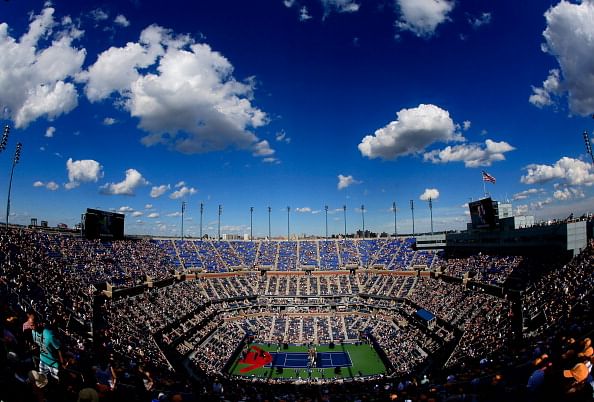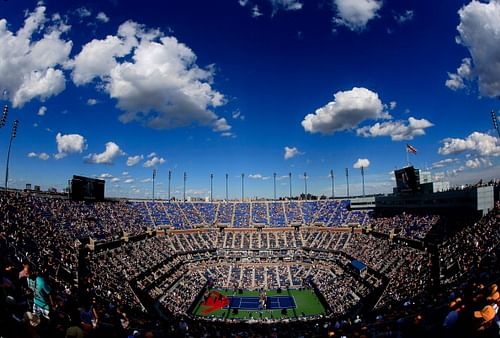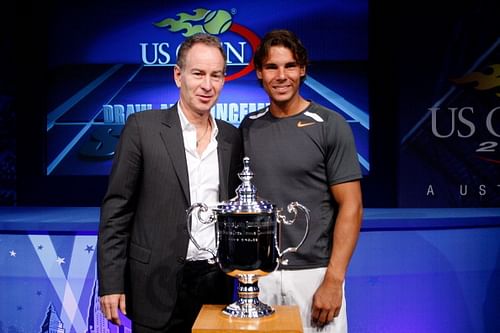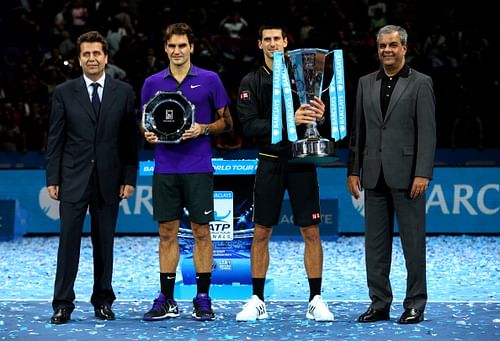
The fabric of tennis: Hardcourts and evolution
At the dawn of tennis, there were pieces of land; then men drew lines on them. With this, the game of rackets was born. Since the conception of the modern tennis game in the 1870s, the players and the ball have evolved together from a game played by the classy nobles to an athletic culture prevalent throughout the world. Although it is the youngest surface, the hardcourt has become a favourite among tournaments. Numerous all-time greats have fought unforgettable battles on the synthetic surfaces that made tennis completely different.

Before the start of the Open Era in 1968, tennis was played only on grass and clay. European tournaments were symbolized by red clay, while other tournaments thrived with shades of green. Then the hardcourts came, offering greater consistency of bounce than others. The court’s lack of need for maintenance and great aesthetics soon became increasingly popular across the world. The Australian Open changed to hardcourts in 1988, 10 years after the US Open adapted the Deco Turf in 1978. Today, hardcourts appear in every corner of the world and in the majority of the tournaments on tour.
Every tennis season begins with hardcourt tennis and continues in the same vein until clay and grass seasons from April to July take over. After that, it’s all hard courts again – each season ends with the US Open and ATP World Tour Finals played on hardcourts. The hardcourts are home to many amazing athletes who take pride in the title of ‘hardcourt specialist’, and have fostered many rivalries that have set new bars.
John McEnroe

Although not known for his physical power, McEnroe is forever remembered for his world class serve and volley. At the US Open, where the courts are faster than those on clay, McEnroe’s accurate serve and magical volley made him a four time US Open champion. In the 1980s, the Superbrat avenged his losses on grass against Bjorn Borg, who dominated the French Open and Wimbledon.
“You cannot be serious!” When McEnroe played, all the officials in the tournament were extremely careful, as feuds were common with McEnroe. McEnroe’s passion and ruthlessness on court have changed people’s perspective about tennis, a game that people used to believe was reserved for the gentlemen after an afternoon tea. The heated arguments would earn McEnroe the nickname of ‘Superbrat’.
Andre Agassi
The Punisher had a record 26-match winning streak in Melbourne, Australia, where he dominated all the challengers on the hardcourts to establish himself as the oldest Grand Slam winner at the age of 33. Agassi, with his aggressive baseline game, punished serves and hit winners in many unique ways, which have paved the path for the dominant power baseline style on tour today.
With 2 US Open titles and 4 Australian Open titles, the rebellious kid led tennis to new heights through his rivalry with Pete Sampras. His baseline game featured power and pace – his on-the-rise shots are widely replicated by Grand Slam winners such as Djokovic and Murray. Agassi, the New York crowd favourite, painted a new beginning for modern tennis.
Jimmy Connors
Connors, along with Pete Sampras and Roger Federer, holds the record of winning 5 US Open titles in the Open Era. Throughout his lengthy 25-year career, Connors led the way for tennis as a young competitor and as a global ambassador.
Connors is the only person to win the US Open on 3 different surfaces: grass (1974), clay (1976) and hard (1978). Although Connors had never won the French Open, a symbol of prowess on clay, the all-time great did win numerous clay tournaments, including the US Open, back in the 1970s.
As a veteran on tour, Connors was best known for his US Open run in 1991. Connors shocked the world. It is simply impossible to believe that a 39-year-old athlete, who was being written off by history, reached the semi-finals in the era of Pete Sampras, Boris Becker and Andre Agassi. At Flushing Meadows, Connors redefined himself as a symbol of passion and perseverance, and continued to defeat many younger players who wanted to taste Grand Slam success.
Pete Sampras
Pistol Pete had set many records – one of them was his record 5 US Open titles. The first player to hit over 1000 aces during a calendar year, Sampras won his first Grand Slam at the US Open in 1990 and his last at Flushing Meadows in 2002 by staying true to his nickname “The King of Swing.” Sampras dominated numerous North American hardcourt tournaments by serving aces up the T and hitting volleys from the net. The last dominant serve and volley player, Sampras is perhaps among the last generation of the traditional playing style – he sensationalized the game through his powerful strokes and aggressive playing style.
Ironically, Sampras won his first and last Grand Slam tournaments at the US Open by defeating the same opponent, Andre Agassi, in the finals. The two giants’ rivalry matched those between Bjorn Borg and McEnroe and Roger Federer and Rafael Nadal, making tennis an exciting and truly international sport.
The Future of the Game

Since the 1970s, tennis has evolved because of the addition of hardcourts. The surface arguably has fostered a new generation of power baseline players from the era of serve and volley. Competition is becoming fiercer as players with different styles dominate and clash on the diverse surfaces. The rich traditions and new rivalries will continue to make the game of tennis more and more exciting.